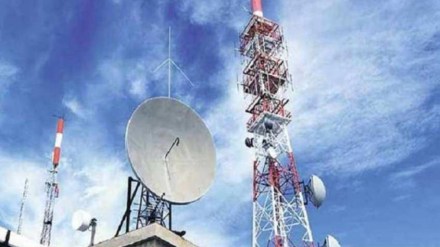The telecom industry reported AGR growth of 7.1 per cent on-quarter and 13.1 per cent on-year during the fiscal second quarter to Rs 681 billion, showed data released by TRAI. The growth, stated an analysis report by JM Financial, was led by 15-17 per cent tariff hike undertaken by private telcos with effect from July 2024 and aided by one more day during the quarter and telcos’ continued premiumisation efforts including a) MBB (mobile broad-band) upgrades; b) prepaid-to-postpaid upgrades; c) data monetisation; and d) international roaming. However, it added, growth was offset by subscriber churn (of 16.8 million in Q2FY25) primarily due to temporary SIM consolidation in the lower ARPU segment post tariff hike.
JM Financial further noted that the complete flow-through of the recent tariff hike to revenue is likely by the next 2-3 quarters for Jio and by Q3FY25 for Bharti Airtel given a higher proportion of Jio’s subs is on long-duration plans. Separately, Vodafone Idea’s AGR increased only by 0.4 per cent QoQ to Rs 98 billion as the 7.8 per cent QoQ tariff-hike-led rise in AGR (excl. NLD/ILD) was mostly offset by 21.4 per cent QoQ decline in ILD/NLD revenue. However, the brokerage firm maintained, BSNL’s AGR (incl. NLD/ILD) rose by 9.6 per cent QoQ to Rs 28 billion in Q2FY25 and AGR (incl. NLD/ILD) market share improved marginally QoQ to 4.1 per cent in Q2FY25 (up 9bps QoQ but down 24bps YoY) due to subs gains post the recent tariff hike by private telcos as it kept its tariff unchanged.
Performance across telecom companies
Per analysis by JM Financial, Jio’s Q2FY25 AGR (incl. NLD/ILD) improved by 6.7 per cent on-quarter to Rs 283 billion, led by the July 2024 tariff hike and aided by one more day during the quarter. However, its AGR (incl. NLD/ILD) market share declined slightly QoQ to 41.5 per cent in Q2FY25 (down 14bps QoQ but up 40bps YoY) due to slower tariff-hike flowthrough and higher subs churn in the lower-ARPU segment. The complete flow-through of the recent tariff hike to revenue is likely by the next 2-3 quarters for Jio and hence the telecom major is expected to recoup its lost market share gradually in the next 2-3 quarters, stated the brokerage firm. “Its AGR grew QoQ in category A circles (+7.9 per cent), category B circles (+8.3 per cent) and category C circles (+5.3 per cent) while it declined in Metros (-1.8 per cent). Further, Jio lost AGR market share QoQ in 18 out of 22 circles during the quarter primarily due to its slower tariff-hike flow-through. However, it continued to expand its market share gradually in the NLD/ILD segment to 12.4 per cent in Q2FY25,” JM Financial said.
Bharti Airtel’s Q2FY25 AGR (incl. NLD/ILD) rose 9.9 per cent QoQ to Rs 272 billion, led by the July 2024 tariff hike and aided by one more day during the quarter. Hence, its AGR (incl. NLD/ILD) market share strengthened to 39.9 per cent in Q2FY25. Per JM Financial report, the telecom company witnessed robust AGR growth QoQ across all category circles – Metros (+11.7 per cent), category A circles (+12.1 per cent), category B circles (+9.5 per cent) and category C circles (+9.7 per cent). Further, it gained AGR market share in 19 out of 22 circles and even regained its leadership position from Jio in the J&K circle.
Vodafone Idea’s Q2FY25 AGR (incl. NLD/ILD) increased only by 0.4 per cent QoQ to Rs 98 billion as 7.8 per cent QoQ tariff-hike-led rise in AGR (excl. NLD/ILD) to Rs 78.4 billion was mostly offset by 21.4 per cent QoQ decline in ILD/NLD revenue to Rs 19.5 billion (probably on account of continued slowdown in global B2B business due to decline in demand for bandwidth, CPaas and other related services especially from global OTT players). Hence, the report stated, its market share in the NLD/ILD segment declined to 37.1 per cent in Q2FY25. It witnessed AGR growth QoQ across all category circles – Metros (+13.9 per cent), category A circles (+9 per cent), category B circles (+5.1 per cent) and category C circles (+0.5 per cent). However, its Q2FY25 AGR (excl. NLD/ILD) market share was also lower QoQ at 14.4 per cent due to continued decline in its overall subs base.
BSNL’s AGR (incl. NLD/ILD) rose by 9.6 per cent QoQ to Rs 28 billion in Q2FY25 as many lower-ARPU subs of private telcos ported to BSNL after they hiked tariffs in July 2024 (while BSNL kept its tariff unchanged). Hence, its AGR (incl. NLD/ILD) market share improved marginally QoQ to 4.1 per cent in Q2FY25.
